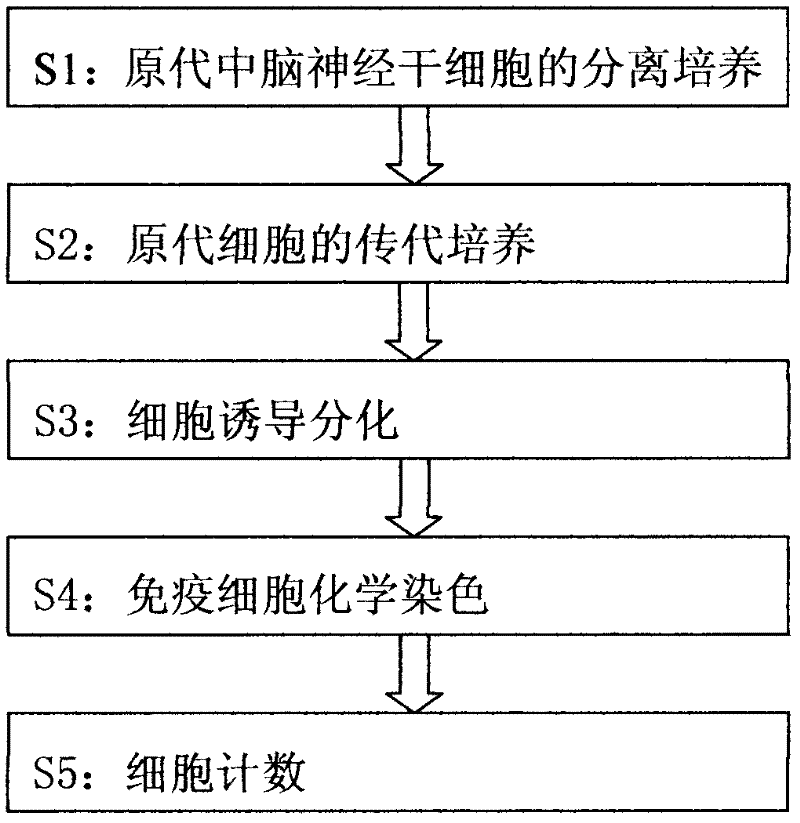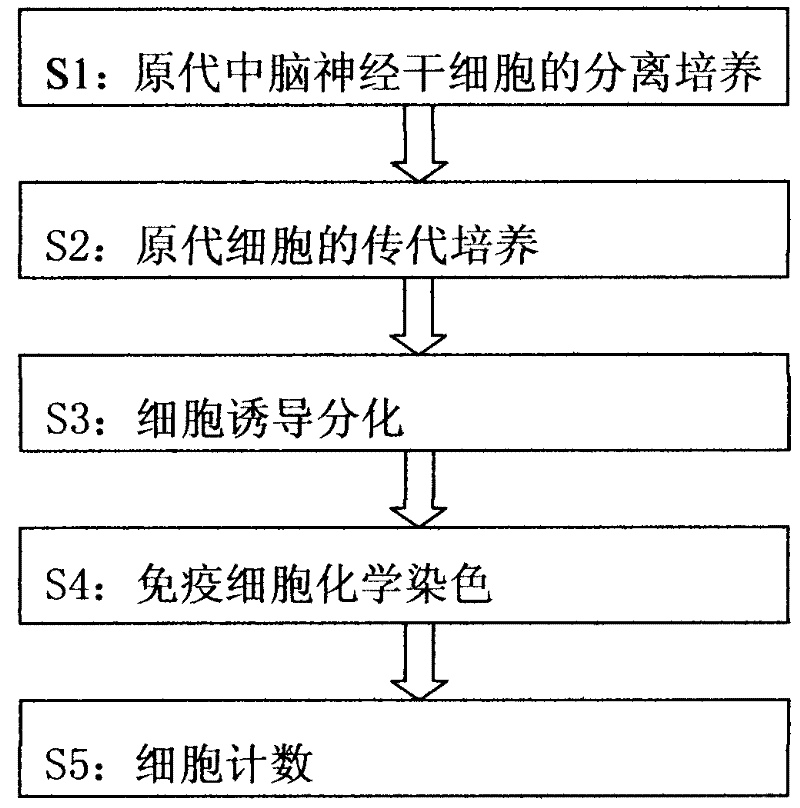In-vitro separation culture and differentiation method for human fetal midbrain nerve stem cells
A technology for separating and culturing brain nerves, which can be applied in the field of biomedicine and can solve the problem of insufficient research on neural stem cells.
- Summary
- Abstract
- Description
- Claims
- Application Information
AI Technical Summary
Problems solved by technology
Method used
Image
Examples
Embodiment Construction
[0014] Such as figure 1 Shown is a schematic flow chart of the steps of the method for in vitro isolation, culture and differentiation of human embryonic midbrain neural stem cells of the present invention, and the method is specifically realized by the following steps:
[0015] S1: Isolation and culture of primary midbrain neural stem cells: Take fresh human embryos induced by water sac at embryonic age 10-13 weeks, aseptically separate the midbrain tissue of the embryos under a microscope, peel off the meninges and surface blood vessels, and put them in PBS solution Rinse three times, repeatedly beat the tissue fragments with a fine pipette until they are completely scattered, centrifuge and wash, blow and beat to make a cell suspension, filter through a 100-mesh stainless steel filter to make a single-cell suspension, add B27 (1:50) and EGF (20ng / ml), bFGF (20ng / ml) DMEM / F12 (1:1) serum-free medium, trypan blue staining and counting viable cells, adjust the concentration of...
PUM
 Login to View More
Login to View More Abstract
Description
Claims
Application Information
 Login to View More
Login to View More - R&D
- Intellectual Property
- Life Sciences
- Materials
- Tech Scout
- Unparalleled Data Quality
- Higher Quality Content
- 60% Fewer Hallucinations
Browse by: Latest US Patents, China's latest patents, Technical Efficacy Thesaurus, Application Domain, Technology Topic, Popular Technical Reports.
© 2025 PatSnap. All rights reserved.Legal|Privacy policy|Modern Slavery Act Transparency Statement|Sitemap|About US| Contact US: help@patsnap.com


